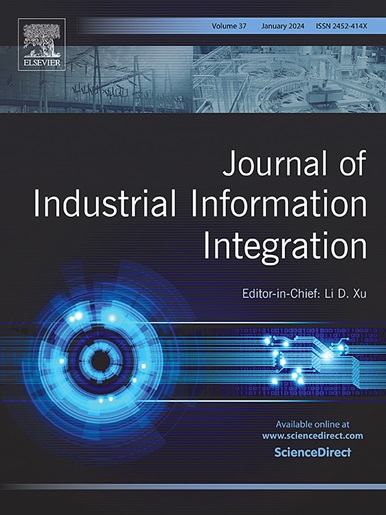Digital twin structural health monitoring driven by multi-fidelity time-series surrogate models
IF 10.4
1区 计算机科学
Q1 COMPUTER SCIENCE, INTERDISCIPLINARY APPLICATIONS
引用次数: 0
Abstract
In structural health monitoring (SHM), real-time observation of a system's structural performance is conventionally undertaken. This involves the utilization of indirect measurement techniques to monitor targets that are not directly quantifiable through sensor readings. The digital twin (DT) concept offers a novel comprehensive structural performance monitoring approach by establishing a virtual-to-physical mapping. Nevertheless, challenges persist in predicting autocorrelated time-series data in dynamic systems and achieving a balance between the costs and modeling accuracy. This paper proposes a Digital Twin framework based on a multi-fidelity time-series surrogate mode. Taking the real-time monitoring of the suspension structure stress of an autonomous mobile robot (AMR) as an example, the application process of this framework is illustrated. First, a load identification model was constructed based on measured data to recognize the load applied to the suspension structure, providing input parameters for the subsequent stress prediction model. The second stage involves the construction of an autoregressive least squares multi-fidelity Gaussian process regression model. Incorporating an autoregressive term within this model enables the integration of the autocorrelation characteristics of the data during prediction whilst simultaneously automating the optimization of hyperparameters based on heuristic rules. This process mitigates the influence of initial hyperparameter settings on the model's training. Finally, a DT of the AMR suspension structure was constructed, and its effectiveness in real-time stress monitoring of the suspension structure was verified under five different working conditions. The work improves the prediction accuracy of time-series monitoring targets in dynamic systems, offering a new solution for applying DT in SHM processes.
多保真度时间序列替代模型驱动的数字孪生结构健康监测
在结构健康监测(SHM)中,通常对系统的结构性能进行实时观测。这包括利用间接测量技术来监测不能通过传感器读数直接量化的目标。数字孪生(DT)概念通过建立虚拟到物理映射,提供了一种新颖的综合结构性能监测方法。然而,在预测动态系统中的自相关时间序列数据以及在成本和建模精度之间取得平衡方面仍然存在挑战。提出了一种基于多保真度时间序列代理模式的数字孪生框架。以自主移动机器人(AMR)悬架结构应力实时监测为例,说明了该框架的应用过程。首先,基于实测数据构建荷载识别模型,识别作用于悬架结构的荷载,为后续应力预测模型提供输入参数;第二阶段是建立自回归最小二乘多保真高斯过程回归模型。在该模型中加入一个自回归项,可以在预测期间集成数据的自相关特征,同时基于启发式规则自动优化超参数。这个过程减轻了初始超参数设置对模型训练的影响。最后,构建了AMR悬架结构的DT模型,并在5种不同工况下验证了其实时监测悬架结构应力的有效性。该工作提高了动态系统中时间序列监测目标的预测精度,为将DT应用于SHM过程提供了一种新的解决方案。
本文章由计算机程序翻译,如有差异,请以英文原文为准。
求助全文
约1分钟内获得全文
求助全文
来源期刊

Journal of Industrial Information Integration
Decision Sciences-Information Systems and Management
CiteScore
22.30
自引率
13.40%
发文量
100
期刊介绍:
The Journal of Industrial Information Integration focuses on the industry's transition towards industrial integration and informatization, covering not only hardware and software but also information integration. It serves as a platform for promoting advances in industrial information integration, addressing challenges, issues, and solutions in an interdisciplinary forum for researchers, practitioners, and policy makers.
The Journal of Industrial Information Integration welcomes papers on foundational, technical, and practical aspects of industrial information integration, emphasizing the complex and cross-disciplinary topics that arise in industrial integration. Techniques from mathematical science, computer science, computer engineering, electrical and electronic engineering, manufacturing engineering, and engineering management are crucial in this context.
 求助内容:
求助内容: 应助结果提醒方式:
应助结果提醒方式:


